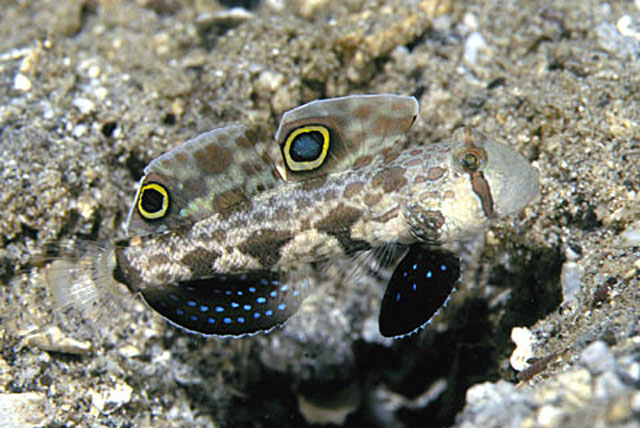| Gobiidae (Gobies), subfamily: Gobiinae |
| 10 cm SL (male/unsexed) |
|
reef-associated; marine; depth range 1 - 30 m |
| Western Pacific: Philippines to the Solomon Islands and Vanuatu, south to the southern Great Barrier Reef; Palau in Micronesia. |
|
Dorsal spines (total): 7-7; Dorsal soft rays (total): 10-11; Anal spines: 1-1; Anal soft rays: 10-11. Conspicuous ocellated dorsal fins (Ref. 90102); characterized by pale bluish grey to yellowish tan; narrow brown bar below eye; upper half of body with irregular brown spot and saddles; three irregular brown bars on lower half of body; narrow brown bar across base of caudal fin; pelvic and anal fins black with blue spots; rounded caudal fin; longitudinal scale series 48-55; mainly ctenoid body scales posteriorly, becoming cycloid anteriorly just behind pectoral base and below first dorsal fin; cycloid on ventral surface of abdomen; head and midline of nape without scales; depth of body 4.3-5.6 in SL (Ref. 90102). |
| Adults occur in sandy to silty bottoms of lagoons and coastal bays near coral, rubble or leaf litter shelter. Solitary or in pairs that share sandy burrows (Ref. 90102). Feed on small interstitial invertebrates by sifting mouthfuls of sand. Monogamous (Ref. 52884, 48637). |
|
Least Concern (LC); Date assessed: 27 August 2020 Ref. (130435)
|
| harmless |
Source and more info: www.fishbase.org. For personal, classroom, and other internal use only. Not for publication.
